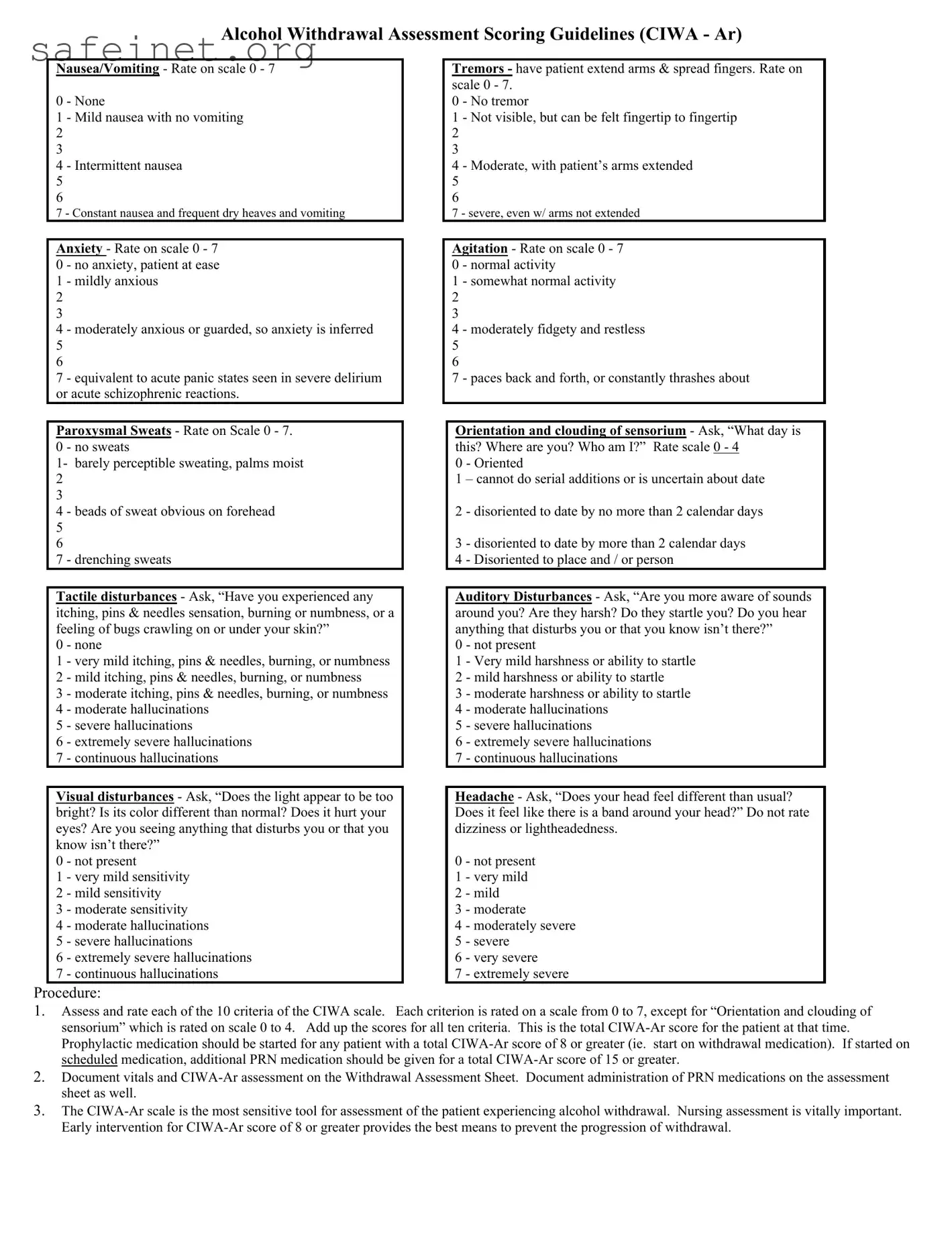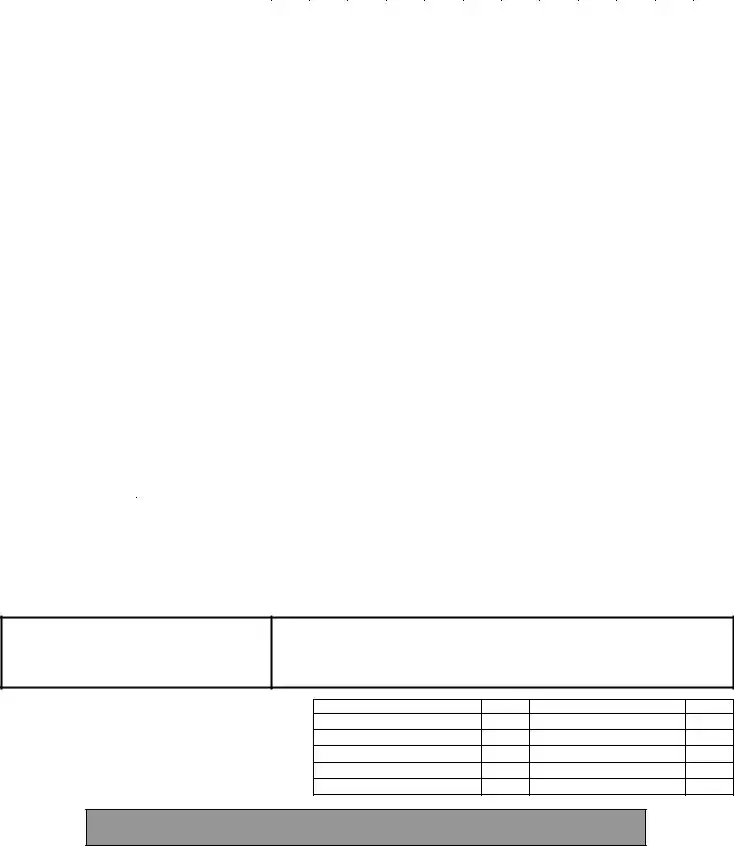The CIWA-Ar form assesses alcohol withdrawal symptoms by evaluating multiple criteria, and it shares similarities with several other clinical assessment tools designed for various purposes. One such document is the DSM-5 Criteria for Substance Use Disorders. This document outlines diagnostic criteria that help clinicians identify substance use disorders based on a patient's behavior, physiological responses, and the impact of substance use on daily life. Both the CIWA-Ar and DSM-5 utilize standardized measurements to gauge the severity of symptoms, aiding clinical decisions regarding treatment and intervention. Additionally, both rely on subjective inputs from the patient, fostering a more tailored approach to care.
Anxiety Assessment Scales serve as another comparable document. These scales, which include instruments like the Generalized Anxiety Disorder 7-item (GAD-7) scale, evaluate the presence and severity of anxiety symptoms in patients. Similar to the CIWA-Ar, they score specific symptoms on a numerical scale to quantify the patient's anxiety level. Clinicians use these assessments to monitor progress over time, making both documents vital tools in managing patients' mental health needs. This utilization of numerical scoring helps clinicians track changes and adjust treatment plans accordingly.
The Glasgow Coma Scale (GCS) is widely recognized for assessing patients in altered states of consciousness, such as after a head injury. This scale measures eye opening, verbal response, and motor response to produce a total score that indicates the level of consciousness. Like the CIWA-Ar, the GCS uses a straightforward numerical scoring system to effectively communicate a patient’s condition to the healthcare team, thereby facilitating timely interventions. Both forms emphasize the importance of structured assessments in addressing acute medical conditions.
The Clinical Opiate Withdrawal Scale (COWS) is another document that parallels the CIWA-Ar, targeting withdrawal symptoms associated with opioid use. COWS evaluates signs like sweating, restlessness, and pupil size, offering a numerical score that represents withdrawal severity. Both tools emphasize rapid, standardized symptom assessment, allowing clinicians to make informed decisions about medical management and initiating appropriate treatment protocols for withdrawal symptoms.
Similarly, the Hamilton Rating Scale for Depression (HRSD) is an established measure for evaluating the severity of depression in patients. Like CIWA-Ar, HRSD scores symptoms based on subjective patient responses and clinician observations, creating a comprehensive evaluation for treatment planning. This correlation reinforces the utility of structured assessments in mental health, ensuring patients receive the most effective care based on their individual symptomatology.
The BRIEF-A (Behavior Rating Inventory of Executive Functioning - Adult Version) provides insights into executive functioning challenges that might be exacerbated by substance withdrawal. Just as the CIWA-Ar assesses withdrawal's impact on a patient's immediate well-being, BRIEF-A evaluates ongoing cognitive functioning. Both tools underscore the multidisciplinary approach required to understand and address the complex needs of individuals with substance use disorders.
The Mini-Mental State Examination (MMSE) is commonly used to screen for cognitive impairment and dementia. This cognitive assessment translates various mental functions into a score, ranging from orientation to attention. The CIWA-Ar has a similar approach, assigning scores to cognitive orientation as part of its assessment. Both assessments highlight the significance of cognitive evaluation in determining the appropriate treatment pathway for individuals undergoing withdrawal or experiencing cognitive issues.
Another relevant document is the Alcohol Use Disorders Identification Test (AUDIT). This screening tool identifies individuals who might be misusing alcohol by quantifying consumption patterns and related consequences. While the CIWA-Ar focuses on current withdrawal symptoms, AUDIT provides broader insight into an individual's overall relationship with alcohol, enabling healthcare providers to develop strategies that address both withdrawal management and long-term support for substance use issues.
Lastly, the Pain Assessment Tools, like the Numeric Rating Scale (NRS), utilize numerical scoring to evaluate a patient's pain levels. Just as the CIWA-Ar measures withdrawal symptoms on a scale, these tools offer a simple method for patients to communicate pain intensity. Both emphasize the importance of symptom tracking in optimal patient care and support timely interventions based on a patient's subjective experience.


